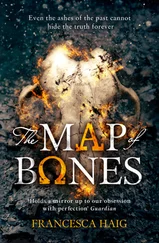She had read just last week about the bust of a major trafficking ring dealing in rare tigers. In that case, the Missouri couple wasn’t bringing in the big cats for pets, but for parts . They were smuggling in tigers, then butchering them. Hides of leopards, tigers, and lions could fetch upwards of twenty thousand dollars. But that wasn’t all. Like some bloody chop shop, they were selling off all parts: tiger penises to be ground into aphrodisiacs, bones for arthritis cures. No part went to waste. Gallbladder, liver, kidneys, even teeth. In the end, such large cats were worth far more dead than alive.
She felt anger building as she followed Jack into the main hold.
A tall pole lamp lit the low-roofed space. Stainless steel cages lined both sides of the long hold; larger pens in the back were still in shadows. She gaped at the size of the smuggling operation, certain now why she was needed here, a veterinarian specializing in exotic animals.
Jack turned and shone his flashlight into the nearest cage.
She stared inside — and knew she was wrong about everything.
Jack Menard studied the woman’s reaction.
Shock and horror widened Lorna’s eyes. She covered her mouth with a hand. But only for a moment. After the initial surprise, he also recognized a glint of concern. Her eyes narrowed again, her lips drawn tight in thought. She moved closer to the cage.
He joined her and cleared his throat. “What type of monkeys are they?”
“ Cebus apella ,” she answered. “Brown capuchin monkeys, native to South America.”
Jack stared at the two who shared the small cage, squatting in their own filth, huddled and scared at the back of the cage. Their limbs and backsides were a deep chocolate brown, their faces and chests a softer tan, their heads capped in black. They were so small he could have cupped one in the palm of his hand.
“Are they babies?” he asked.
She shook her head. “I don’t think so. The fur coloring suggests they’re adults. But you’re right. They’re way too small. Pygmy versions of the breed.”
But Jack knew that wasn’t the most shocking aberration. With a quiet cooing noise, Lorna coaxed the pair to move toward the bars. Her coldly professional manner seemed to melt away, her face softening, relaxing. The pair of monkeys responded to her. Still hugging each other, they crept forward, clinging tightly. Not that they could ever truly be apart.
“Siamese twins,” Lorna said.
The two were joined at the hip — literally — fused together, sharing three legs but bearing four arms.
“Poor things,” she whispered. “They look half starved.”
They came to the bars, plainly needing reassurance as much as sustenance. Their eyes were huge, especially in such small faces. Jack sensed their hunger and fear and also a trace of hope. He reached into a pocket and removed a granola bar. He ripped it open with his teeth, broke off a piece, and handed it to Lorna.
She gently passed it through the bars. One of them took it with its tiny fingers — then the pair retreated to share the prize, huddled around it, nibbling from both sides. But their eyes never left Lorna.
She glanced to Jack. For a moment, he saw the girl he remembered from his school days, before he left for the Marines. She had dated his younger brother Tom during their sophomore year — and the summer thereafter. He shied away from that memory.
Lorna must have sensed that well of pain. Her face hardened, going professional again. She nodded to the other cages. “Show me.”
He led her along the rows of cages, shining his flashlight into the shadowy recesses. Each enclosure held a different animal, some familiar, some exotic. But like the monkeys, they all bore some twisted abnormality. They stopped next at a large glass-walled terrarium that held a fifteen-foot Burmese python curled around a clutch of eggs. The snake looked ordinary enough until its coils slid more tightly around the eggs and revealed two pairs of folded vestigial legs, scaled and clawed, remnants of its lizard-like evolutionary origin.
“It looks like a severe form of atavism,” Lorna said.
“And that would be what in English?”
She offered him a small apologetic smile. “Atavism is where a genetic trait, lost for generations, reappears in an individual.”
“A genetic throwback?”
“Exactly. In this case, a throwback to a time before snakes lost their limbs.”
“That’s a mighty long throw , isn’t it?”
She shrugged and moved on. “Most atavism is caused by the accidental recombination of genes. But I don’t think it was accidental here, not with these many cases.”
“So you’re saying someone bred them this way on purpose. Is that even possible?”
“I can’t rule it out. Genetic science has come a long way and continues to push boundaries. At ACRES, we’ve successfully cloned wild cats. We’ve even merged a fluorescent protein from a jellyfish to produce a cat that glows in the dark.”
“Mr. Green Genes. I read about that,” he said. “In fact, it’s one of the reasons why I called for you. I needed an expert on genetics and breeding. Someone to tell me who could have produced this bizarre cargo.”
He led her through the hold. A wire cage held a mass of winged bats the size of footballs.
“Vampire bats,” Lorna said. “But they’re ten times the size they should be. May be a form of primordial gigantism.”
Similarly a caged fox down the row was the size of a bear cub. It hissed and growled and threw itself against the bars. They quickly moved past, stopping briefly at a tall cage that held an ordinary-sized parrot, but it had no feathers.
It cawed loudly, leaped to the front bars, and studied them while cocking its head back and forth. Jack had a hard time hiding his disgust. There was something so alien and wrong about its appearance.
Lorna just moved closer. “When baby parrots first hatch, they’re featherless or covered only with a light down. I don’t know if this one’s stunted into an infantile state, or if it’s a throwback, too. In fact, it’s theorized that birds are the closet living relatives of dinosaurs.”
Jack didn’t argue. The creature — leather-skinned and beaked—
definitely had a prehistoric look to it. But what really got him unnerved was the sharpness of its attention.
The bird leaped back to its perch, spouting a garble of Spanish. That aspect of the parrot — the ability to mimic — remained intact. It began to screech a string of numbers in English, its pronunciation and diction sounding perfectly human, if pitched slightly sharper.
“…three one four one five nine two six five…”
They continued onward, then Lorna stopped in mid-step. She stared back at the cage as the bird continued to screech out numbers. It went on and on without stopping.
“What is it?” he asked.
“That parrot…those first numbers…I can’t be sure…”
“What?”
“Three one four one five. Those are the first five digits of the mathematical constant pi .”
Jack remembered enough from high school geometry to know about pi , represented by the Greek letter?. He pictured the number in his head.
3.1415…
Awe filled Lorna’s voice as the parrot continued its numerological tirade. “Pi has been calculated to trillions of digits. I’d love to find out if the numbers the bird is mimicking are sequentially correct. And if so, how long of a sequence the parrot has memorized.”
As the bird continued without pause, Jack noted a hush fall over the hold. The mewling, growling, even shuffling of the other animals grew quiet, as if they too were listening. Eyes, reflecting the light, seemed to stare toward them from the dark cages.
Читать дальше










